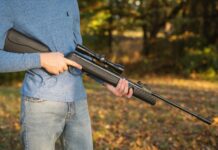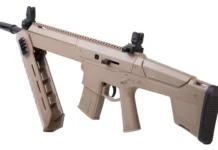In Kansas, deer hunting is a well-liked tradition. Kansas Deer Season 2024-2024 has plenty of opportunity for hunters to capture deer across multiple seasons and with various sorts of equipment. To help you have a great season, this guide includes important information about Kansas deer hunting dates, laws, licensing requirements, bag restrictions, and more.
Table of Contents
Kansas Deer Hunting Season Dates
From early September through January, Kansas offers specialized deer seasons for a variety of hunting equipment. The suggested dates for Kansas’s deer seasons in 2024 and 2024 are as follows:
KS Deer SeasonDatesDescription Youth and Disability SeasonSeptember 2 – September 10, 2024Early season for youth under 18 and hunters with disabilities to deer hunt with a permit. Muzzleloader SeasonSeptember 11 – September 24, 2024Deer may be taken with muzzleloader or archery equipment during this period. Archery SeasonSeptember 11 – December 31, 2024Bowhunting for deer is open for the longest duration of any season. Pre-Rut Firearm Whitetail Antlerless-OnlyOctober 7 – October 9, 2024Brief firearm season for harvesting antlerless deer. Regular Firearm SeasonNovember 29 – December 10, 2024General firearm deer hunting season in Kansas. Extended Firearm Whitetail Antlerless-Only – 1st SegmentJanuary 1 – January 7, 2024 (Units 6, 8, 9, 10, 17)Additional antlerless deer harvest after the regular season in specific units. Extended Firearm Whitetail Antlerless-Only – 2nd SegmentJanuary 1 – January 14, 2024 (Units 1, 2, 3, 4, 5, 7, 11, 14, 16)Additional antlerless deer harvest after the regular season in specific units. Extended Firearm Whitetail Antlerless-Only – 3rd SegmentJanuary 1 – January 21, 2024 (Units 10A, 12, 13, 15, 19)Additional antlerless deer harvest after the regular season in specific units. Extended Archery Whitetail Antlerless-OnlyJanuary 22 – January 31, 2024 (Unit 19 only)Extra whitetail does can be taken in Unit 19 with archery gear. Fort Riley Military Base SeasonCheck specific datesSeparate deer season for permit holders at Fort Riley military base. Fort Leavenworth Military Base SeasonCheck specific datesSeparate deer season for permit holders at Fort Leavenworth military base.
Kansas Deer Hunting Regulations
Regulations governing license, hunter education, corpse tagging, and general hunting guidelines apply to deer hunting in Kansas. Here are several important rules:
- Both local and nonresident hunters need the appropriate licenses. There are special, reduced licenses available.
- Anyone born after July 1, 1957, must possess a Hunter education certification.
- Private lands need written authorization. Public road hunting is governed by unique restrictions.
- Game regulations include issues including gifting or selling meat, using a car or drone, or making an electronic call.
- It is necessary to properly tag deer corpses and keep the tag on them until the meat is prepared.
- To avoid wasting game, hunters must make an attempt to recover fallen deer.
- Seasonal requirements dictate the sort of equipment to be utilized.
- During the seasons for muzzleloaders and firearms, orange attire is needed.
- Officers have the right to examine licenses, tools, and harvested game.
For complete information on permitted deer hunting in Kansas, always refer to the summary of the Kansas Department of Wildlife and Parks rules.
Kansas Deer Bag Limits
Depending on the kind of permission you have, you may harvest a certain number of deer:
Permit TypeDeer Bag LimitDescription Resident Firearm (either species/sex)One deer of any kindResident hunters using a firearm may harvest one deer of any kind. Nonresident FirearmOne antlered and one antlerless whitetail deerNonresident hunters using a firearm may harvest one antlered and one antlerless whitetail deer. MuzzleloaderOne deer of any kindHunters with a muzzleloader permit can harvest one deer of any kind. ArcheryOne deer of any kindArchery permit holders may harvest one deer of any kind. Antlerless (any type)One antlerless deer of any speciesPermit holders can harvest one antlerless deer of any species. Property Owner/MaintainerOne deer of any kindPermit allows hunting one deer of any kind on properly owned or maintained property. Antlerless (does or fawns without antler protrusions)Check unit limitsOnly does or fawns without antler protrusions are eligible for antlerless licenses. Be sure to check the unit limits specified on your permit.
Note that only does or fawns lacking antler protrusions are eligible for antlerless licenses. Check the unit limits on your permit as well.
Kansas Deer Hunting Licenses
In order to lawfully shoot deer in Kansas, you must have the appropriate hunting license in addition to the necessary season permits:
- Kansas citizens must have a resident hunting license in order to hunt small game and waterfowl statewide, unless they are excluded.
- For non-residents 16 years of age and older without exceptions, a hunting license is necessary. more restrictions than resident licenses.
- For people ages 16 and above who have not yet finished hunter instruction, an apprentice hunting license is available.
- License at a lower cost for Kansas citizens 15 years of age or younger.
- Senior persons, handicapped veterans, and active military members may be eligible for special licenses.
- Licenses: In addition to a regular hunting license, the proper deer licenses must be acquired.
Annual Hunting License
Residents: Unless exempted by Kansas law, all resident hunters between the ages of 16 and 74 must possess a resident hunting license.
Nonresidents: No matter their age, nonresident hunters must get a nonresident hunting license.
Fee: The data given does not specifically specify the costs associated with hunting permits for residents and non-residents.
Preference Points
Resident: A resident hunter who chooses not to participate in the current season may pay $12.50 for a preference point that will be used in a future drawing for a firearm-either-species, either-sex deer permit.
Non-resident: A non-resident hunter who wishes to forego the current season may buy a preference point that will be used in a future drawing for a white-tailed deer ticket.
Mule Deer Stamp Fee
Price: $152.50 (plus the above-mentioned nonresident white-tailed deer permit price).
An application for the Mule Deer Stamp must be submitted by a nonresident during the April application period. The applicant’s White-tailed Deer Archery or Muzzleloader Permit becomes an Either-species/Either-sex Archery or Muzzleloader Permit if it is pulled. There is no preference point system for this Mule Deer Stamp draw. If unsuccessful, the hunter will be given the permit for the successful draw unit for white-tailed deer taken with an arrow or muzzleloader.
Where to Hunt Deer in Kansas
Deer hunting is permitted on a lot of public property in Kansas:
Walk-in Hunting Access areas: The WIHA program is active on more than a million acres of private property. need a permission.
Wildlife Management Areas: Nearly 400 WMAs, ranging in size from 40 to over 10,000 acres, are designated as wildlife management areas.
State Parks: Some state parks allow limited deer shooting, although there are limits.
Federal areas: When the season is right, hunting is permitted on federal lands such as national wildlife refuges, Army Corps lakes, and national forests.
Particularly for non-resident hunters, public areas provide good possibilities for deer hunting. Make careful to investigate several regions to identify those with thriving deer populations.
Field Dressing and Processing Deer
It’s crucial to field dress harvested deer properly:
- Use latex gloves and handle brain and spinal tissue as little as possible.
- Covering meat and washing your equipment in vinegar water will keep them clean.
- Quickly calm down the deer and steer clear of dragging in mud or debris.
- Before your hunt, understand the right field dressing methods by watching video lessons.
Many hunters do their own venison processing. Some people butcher deer at meat processors. Treat all meat with hygiene. Deer meat may be used in a variety of dishes by grinding it or creating jerky out of it.
Apply for Your Kansas Deer Permit
Applications start in April! Most deer licenses in Kansas must be applied for by both citizens and non-residents.
- The application deadline for muzzleloader and weapon licenses is June 9, 2024.
- Applications for whitetail firearms from non-residents cost $25.
- After the draw, unused permits could be distributed on a first-come, first-served basis.
- Through October 1, 2024, archery licenses may be acquired over the counter.
- If the quota allows, antlerless permits are limitless after the draw.
- Create an account and submit your deer permit applications online at https://www.kshuntfishcamp.com. So that you don’t miss out, mark your calendar.
Your Kansas deer hunt will be successful if you do your homework and are aware of the rules, hunting seasons, and permit requirements. For a successful deer season in 2024-2024, use this information. For complete information and legal requirements, contact the Kansas Department of Wildlife and Parks.
Happy hunting!
Frequently Asked Questions











































